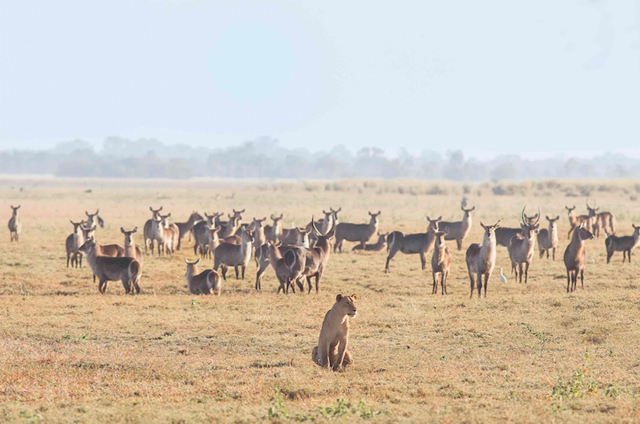

In the sliver of time since the Industrial Revolution, human enterprise has turned disastrous, ramping up extinctions, causing nuclear meltdowns, and altering the atmosphere that’s kept Earth’s climate stable for more than 10,000 years. Nature, to its credit, always tries to claw back, like a fire-resistant seed sprouting to life after the flames. But in many cases, the damage we’ve wrought runs too deep for an organic fix.
There is hope, however. By putting our ingenuity and resources toward science-based restoration efforts, we can complement nature’s ability to adapt—and even boost it further. The five catastrophes on the following pages show it takes patience (and more than a little humility) to play Earth’s sidekick. But minding cues from when that symbiosis flourished in the past could be the key to keeping the planet healthy and averting even bigger upheavals.
Gorongosa National Park, Mozambique
Recovery Initiated: 1995
Progress: Nearly complete
Disaster: When ecologist Kenneth Tinley flew over Mozambique’s Rift Valley in 1972, he saw abundance. By his estimate, the nearly million acres of Gorongosa National Park were home to upward of 30,000 large grazing animals, including buffalo, wildebeest, and elephants—along with hundreds of lions. But in 1977, after the African nation freed itself from close to 500 years of Portuguese rule, Mozambique erupted in civil war. The two sides wouldn’t reach a truce until 1992, by which point 1 million residents had died and combatants had slaughtered more than 90 percent of some mammal populations to feed and fund the fighters.
Comeback: The loss called for an ambitious experiment in ecological resurrection. On its own, the vast floodplain with fertile soil and abundant rainfall provided prime pasture for small grazers like waterbuck. But while some species could rebound quickly, larger wildlife like zebras and hippos needed an extra push. Although initial stewardship efforts began in 1995, in 2008 the Mozambique government and American nonprofit Carr Foundation agreed to team up on a decades-long plan—called the Gorongosa Restoration Project—to bolster biodiversity. A 15,000-acre enclosure christened the Sanctuario kept animals safe from lions and poachers, allowing them to grow their numbers before they’d get released into the park.
But helping fauna reproduce wasn’t enough. People needed a hand, too. “Recovery depends on the interaction between human and natural forces,” says Marc Stalmans, the park’s director of scientific services.
To sustain the quarter-million or so Mozambicans who live in the area, the project sets up grants for ranger and tourist guide training programs, shade-grown-coffee microenterprises, education, and medical services. All this eases pressure on the animals by providing food and health security for communities. With poaching incidents down 72 percent, Gorongosa is now a literal textbook model for balancing ecology with economy: The E.O. Wilson Biodiversity Foundation, a leader in conservation research and partner of the Carr Foundation, cites the park in science curricula to show how multipronged efforts can nurse dying landscapes back to life.

